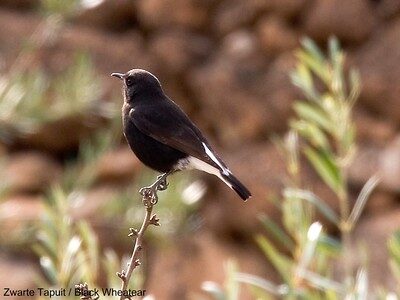Diet and prey availability of the Black Wheatear Oenanthe leucura in the El Hodna region (M’Sila, Algeria)
Fatima Boudrissa, Mourad Zemouri, Abdelazize Franck Bougaham
Abstract:
The Black Wheatear Oenanthe leucura is distributed in the arid rocky landscapes of the Iberian Peninsula and North Africa. The species is insectivorous in the South of Europe, while its diet has not yet been studied in the North-African population. In this study, we looked into its prey choice and availability in the El Hodna area of M’Sila, Algeria. Prey availability was estimated during the breeding season 2020 by means of Pitfall traps, butterfly net, sweep net and sight hunting method. The prey groups consumed by the species in winter 2019 and spring 2020 were determined by using 219 faecal samples found on the different perches. Faecal samples analysis revealed 1656 prey items. The species’ diet is dominated by insects, which may be related to the great abundance of this prey group in the habitat. The Black Wheatear’s main food resources were ants, orthopterans and beetles. In the winter, the most consumed prey groups ranged in size from 7.31 to 13.25 mm, whereas in the spring, they ranged from 1.5 to 7.37 mm. The most abundant taxonomic group during the breeding season were insects (RA = 97.64%), and Hymenoptera was the most widely accessible (RA = 72.6%) in the habitat of the species because of the apparent abundance of ants (RA = 71.14%). We determined the Ivlev index (Li), which enables a comparison between the species’ diet and the prey abundance in the habitat. According to the Ivlev Index, the Black Wheatear is an opportunistic bird, catching the majority of the area’s available prey.
